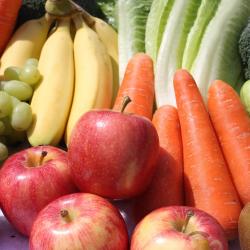How to Encourage Healthy Eating Habits in Older Adults
As people age, maintaining a healthy diet becomes increasingly vital to ensure a good quality of life, prevent chronic diseases, and promote overall well-being. However, older adults may face unique challenges when it comes to nutrition, such as reduced appetite, changes in taste, dental issues, and sometimes a lack of motivation to prepare nutritious meals. Encouraging healthy eating habits in this demographic requires a thoughtful approach that considers these challenges and promotes sustainable changes. Here’s how caregivers and family members can support older adults in adopting healthier eating habits.
1. Understand Nutritional Needs
Older adults have different nutritional requirements than younger individuals. As metabolism slows down, calorie needs decrease, but the demand for essential nutrients such as calcium, vitamin D, vitamin B12, fiber, and potassium may increase. Focus on nutrient-dense foods that provide vitamins and minerals without excessive calories.
2. Plan Balanced Meals
Ensure that meals are balanced and include a variety of food groups:
-
Fruits and Vegetables: Encourage the consumption of a colorful array of fruits and vegetables. They are high in essential nutrients and fiber while being low in calories.
-
Whole Grains: Opt for whole grains such as brown rice, oats, and whole wheat bread over refined grains. They have more nutrients and fiber.
-
Lean Proteins: Include sources of lean protein such as poultry, fish, beans, and legumes to maintain muscle mass.
-
Dairy or Dairy Alternatives: Provide options like low-fat milk, yogurt, or fortified plant-based alternatives to ensure adequate calcium and vitamin D intake.
3. Address Physical Challenges
Physical limitations and health conditions may affect an older adult’s ability to shop, cook, or even chew and swallow food. Solutions may include:
-
Meal Delivery Services: Consider arranging for meal delivery services that cater specifically to nutritional needs of older adults.
-
Adaptive Utensils and Tools: Use adaptive kitchen tools to make meal preparation easier and utensils that assist with eating.
-
Dental Health: Address dental issues promptly to prevent discomfort when eating; softer food options may also be necessary.
4. Create a Pleasant Dining Experience
Encourage a positive eating environment that can enhance the appetite:
-
Social Meals: Share meals with family or community groups to make eating a social and enjoyable activity.
-
Table Setting: Ensure the table is nicely set, which can make meals more appealing.
-
Routine: Establishing regular meal times can help stabilize appetite and provide a sense of normalcy.
5. Include Older Adults in Meal Planning
Engage older adults in the meal planning process:
-
Recipe-Sharing: Involve them in sharing and finding new recipes that cater to their taste and dietary needs.
-
Grocery Shopping: Whenever possible, take them grocery shopping to choose foods they enjoy that are also healthy.
-
Cooking Together: Encourage participation in meal preparation, which can also provide a form of light exercise and a sense of accomplishment.
6. Manage Specific Health Concerns
Tailor dietary choices to address specific health conditions:
-
Hypertension: Opt for low-sodium foods and emphasize a diet rich in fruits, vegetables, and whole grains.
-
Diabetes: Monitor carbohydrate intake closely and spread meals throughout the day to maintain steady blood sugar levels.
-
Heart Disease: Favor foods low in saturated fats and cholesterol, and include heart-healthy fats like those from flaxseed, nuts, and olive oil.
7. Educate and Inform
Ensure older adults understand the importance of good nutrition:
-
Nutritional Workshops: Arrange for educational sessions or workshops on nutrition specifically targeted toward older adults.
-
Clear Communication: Simplify nutritional guidelines, making them easy to understand and follow.
Encouraging healthy eating habits in older adults involves meeting them where they are – understanding their individual circumstances, health conditions and preferences. With patience, support, and creativity, we can help older adults enjoy a nutritious diet that sustains their health and enriches their lives.






















